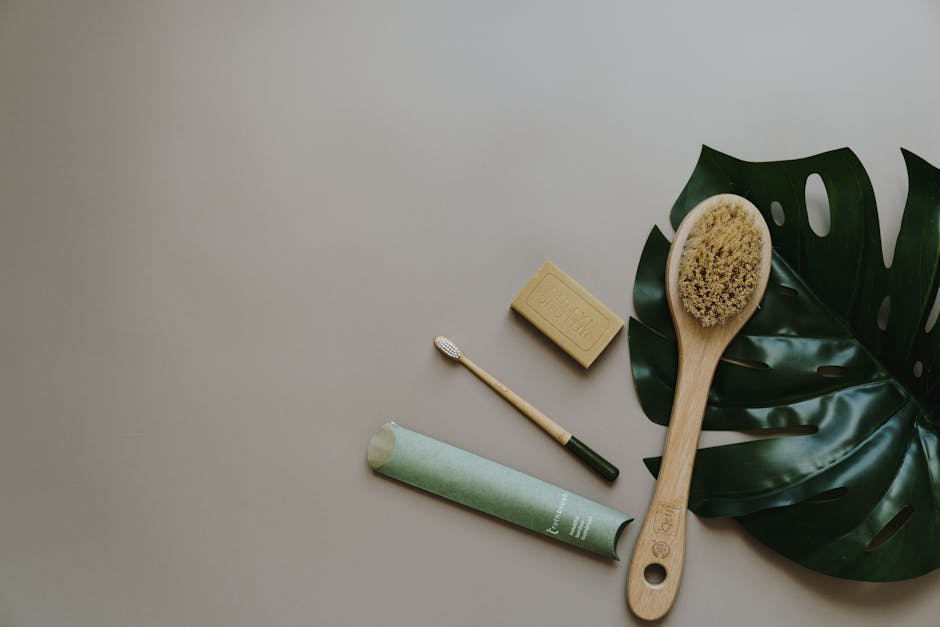Why Plastic-Free Beauty Products Are Essential for Your Health and the Planet
Plastic free beauty products are revolutionizing how we think about skincare, makeup, and personal care. These innovative alternatives eliminate plastic packaging and harmful plastic ingredients, offering you safer formulations while protecting our environment.
Quick Guide to Plastic-Free Beauty:
- Solid bars – Shampoo, conditioner, and cleansing bars in paper or cardboard packaging
- Glass containers – Serums, moisturizers, and treatments in recyclable glass jars
- Metal packaging – Lipsticks, balms, and compacts in aluminum or steel cases
- Bamboo options – Makeup brushes, containers, and accessories from sustainable bamboo
- Refillable systems – Makeup palettes and skincare with replaceable components
The beauty industry creates a staggering 120 billion units of packaging waste every single year. Most of this plastic ends up in landfills or oceans, where it breaks down into microplastics that enter our food chain and bodies.
But here’s the good news: plastic-free alternatives are now just as effective as conventional products. Modern waterless formulations are more concentrated, last longer, and often work better than their plastic-packaged counterparts.
These sustainable swaps aren’t just better for the planet – they’re better for your health too. Many conventional beauty products contain microplastics and chemicals like PFAS that can be absorbed through your skin. Plastic-free brands typically focus on cleaner, safer ingredients.
The shift is happening fast. A growing number of brands are proving that you don’t have to choose between performance and sustainability.
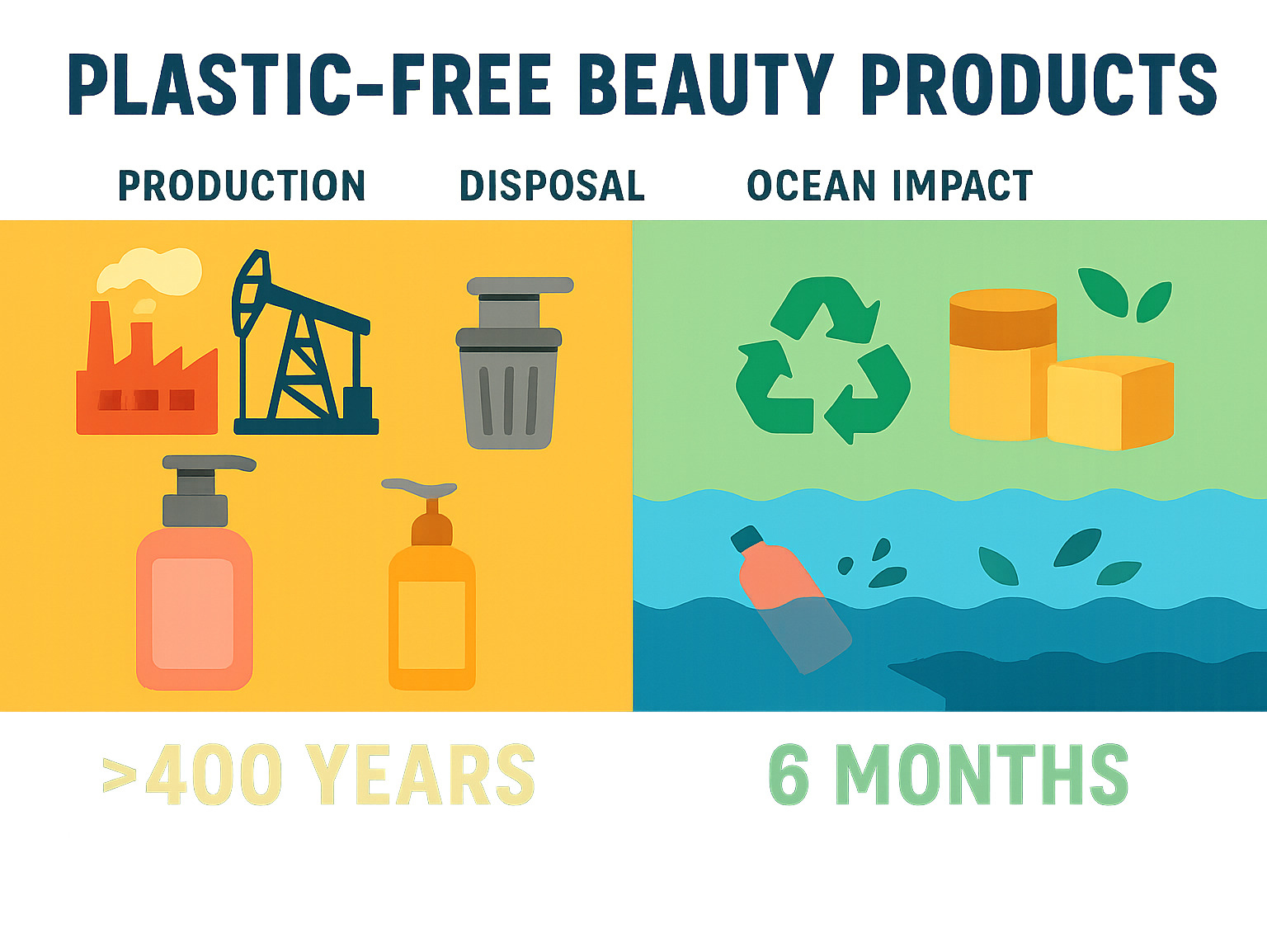
Plastic free beauty products terms made easy:
The Problem with Plastic in Your Beauty Routine
Your morning skincare routine might seem harmless, but there’s a hidden problem lurking in those sleek bottles and tubes. The beauty industry’s plastic addiction is creating an environmental and health crisis that affects us all.

Every year, those 120 billion units of cosmetic packaging we mentioned earlier have to go somewhere. Most end up in landfills where they’ll sit for decades, slowly leaching chemicals into the soil. But the real tragedy happens when this plastic reaches our oceans.
Picture this: by 2050, scientists predict there will be more plastic than fish swimming in our seas. That’s not just a statistic – it’s a wake-up call. Much of this ocean plastic comes from beauty packaging that gets swept into waterways and eventually reaches marine ecosystems.
The Great Pacific Garbage Patch serves as a stark reminder of what happens when plastic waste accumulates. This floating island of trash, twice the size of Texas, contains millions of tons of plastic debris – including countless beauty product containers.
But here’s where it gets personal. As plastic breaks down in the environment, it creates microplastics – tiny particles that end up everywhere, including in our bodies. These microscopic pieces act like sponges, soaking up harmful chemicals before we accidentally ingest or inhale them.
The health implications are genuinely concerning. Many beauty products contain endocrine disruptors like BPA and phthalates, which can interfere with your hormone system. These chemicals can be absorbed directly through your skin during your daily beauty routine.
Even more troubling are PFAS chemicals – the so-called “forever chemicals” found in waterproof mascara and long-lasting lipsticks. A 2024 study on PFAS absorption revealed that these carcinogenic substances can penetrate your skin barrier, yet they’re rarely clearly labeled on products.
The environmental cost extends beyond waste. Plastic production relies heavily on fossil fuels, contributing significantly to greenhouse gas emissions. And here’s the kicker: less than 10% of plastic actually gets recycled globally. The rest? It accumulates in our environment indefinitely.
This isn’t just about being eco-conscious anymore – it’s about protecting your health and ensuring a livable planet for future generations. The shift toward plastic free beauty products isn’t a passing trend; it’s an urgent necessity that can’t wait.
The Ultimate Guide to Plastic-Free Beauty Products
The beauty world is experiencing something truly exciting right now. Plastic free beauty products aren’t just catching up to conventional ones – they’re often surpassing them in quality, performance, and innovation. What started as a small movement has blossomed into a full revolution, with brands creating formulations that work beautifully while supporting a circular economy.
Gone are the days when choosing sustainable meant settling for less. Today’s plastic-free alternatives span everything from skincare and makeup to haircare and body care. We’re seeing incredible innovations in waterless technology, concentrated formulas packed with powerful natural ingredients, and packaging solutions that are as neat as they are earth-friendly.
The magic happens when brands focus on what really matters: creating products that deliver results while respecting our planet. Glass jars protect delicate serums from light damage. Metal compacts feel luxurious in your hands. Bamboo containers bring a touch of natural beauty to your vanity. These aren’t compromises – they’re upgrades.
Solid Stars: Waterless Wonders for Hair and Body
Picture this: your entire hair and body care routine fits in a small travel bag, with no risk of spills or TSA drama. That’s the beauty of solid, waterless products – they’re changing how we think about our daily routines.
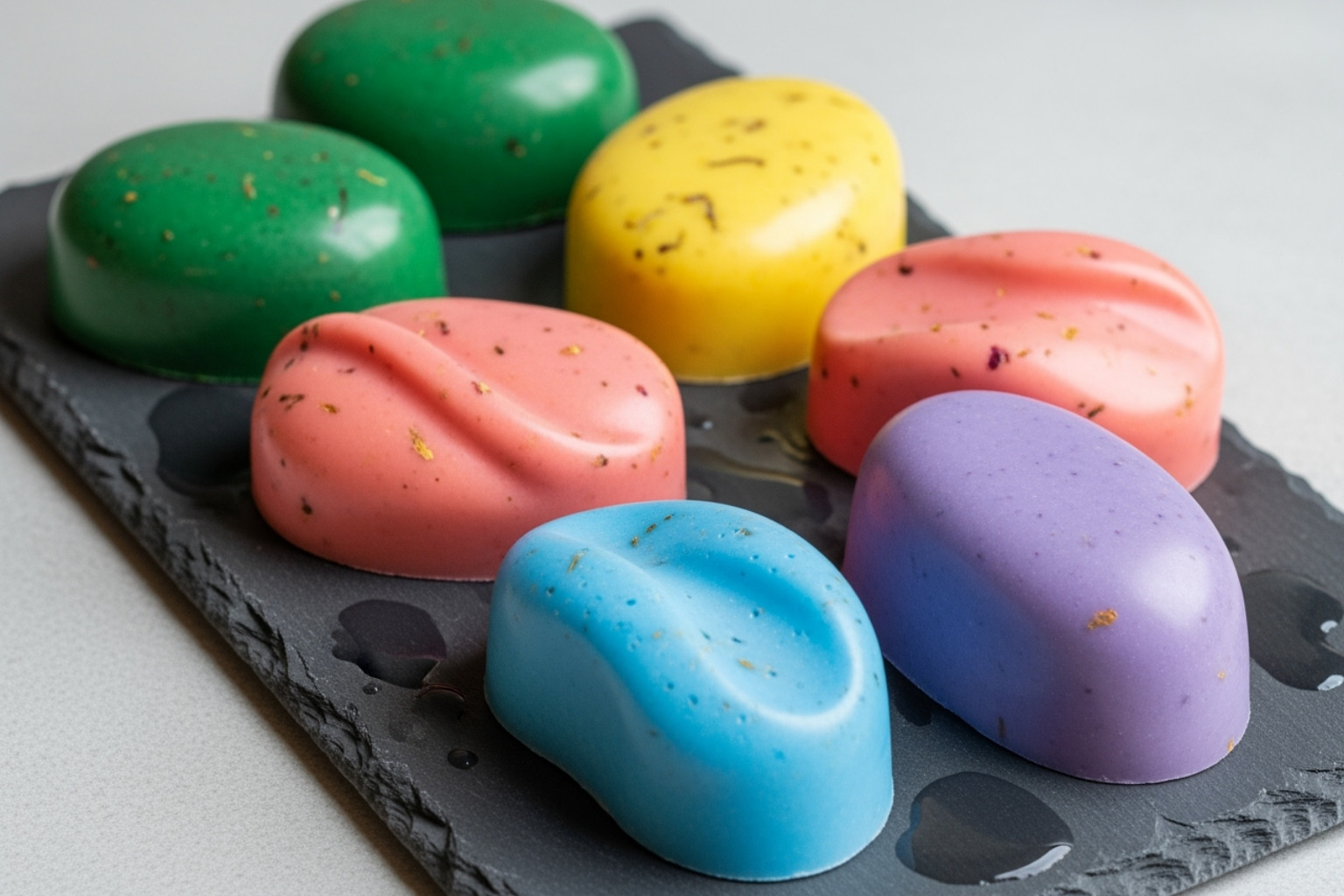
Shampoo bars are the perfect place to start your solid journey. One bar typically replaces two to three plastic bottles, lasting months instead of weeks. Conditioner bars follow the same principle, delivering deep moisture without the plastic waste. For your body, body wash bars create rich, creamy lathers that rival any liquid soap, while lotion bars melt into your skin, providing long-lasting hydration.
Don’t overlook shave bars either – these concentrated formulas create a protective, moisturizing lather that leaves your skin incredibly smooth. The secret lies in their concentrated nature. Without water as a filler, these bars pack more active ingredients into every use.
The travel-friendly benefits are just the beginning. These waterless wonders also reduce water consumption during manufacturing, often come wrapped in compostable paper or cardboard, and offer incredible long-lasting value. When you hold a beautifully crafted solid bar, you’re holding months of use in the palm of your hand.
Refillable & Reusable: The Future of Sustainable Makeup
There’s something deeply satisfying about clicking a fresh refill into a beautiful compact you’ve been using for months. This is makeup’s future – and honestly, it feels pretty luxurious.
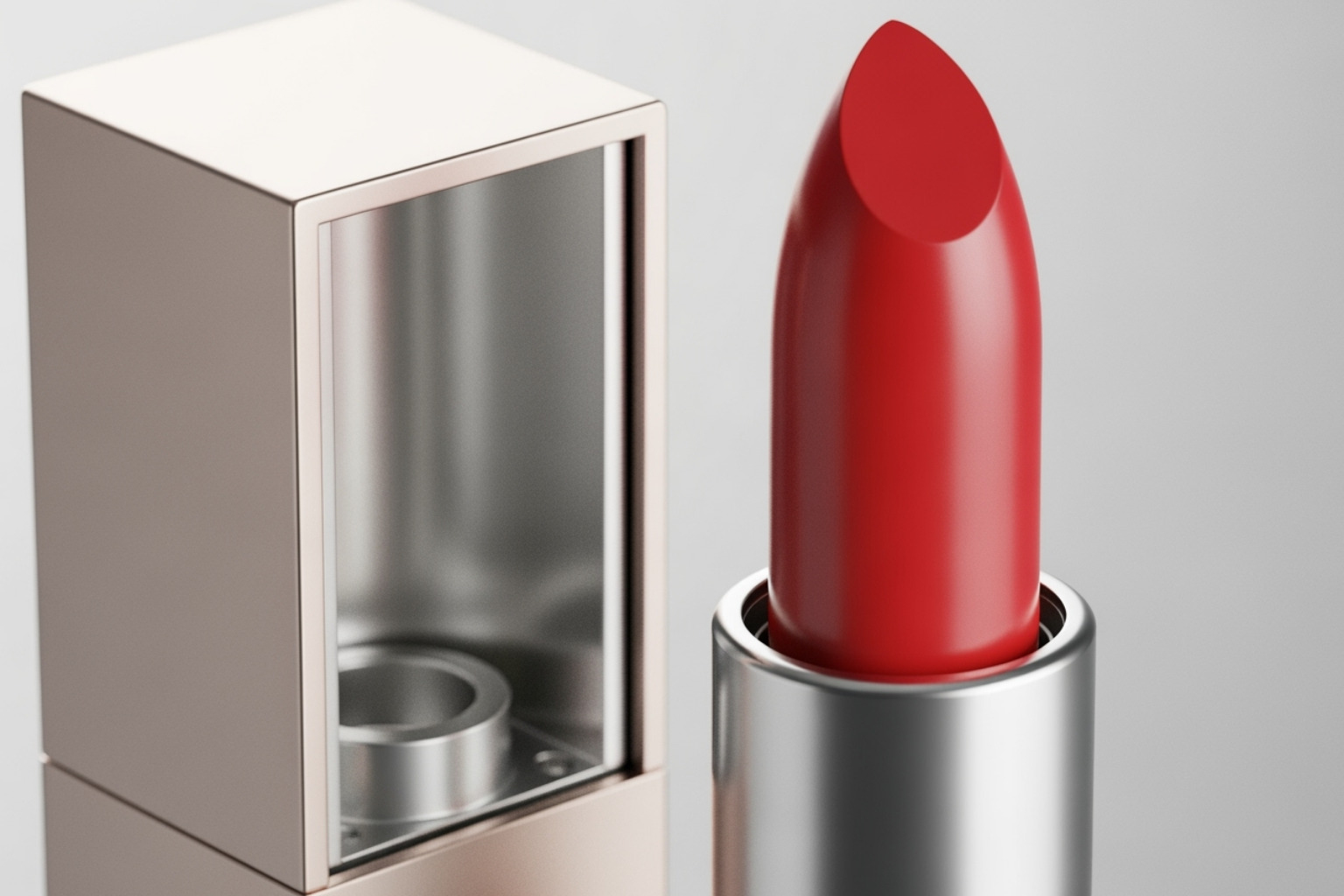
Refillable foundations are leading this charge, housed in neat metal compacts that feel substantial and premium. Eyeshadow palettes with replaceable pans let you customize your colors while keeping the same beautiful case. When your favorite shade runs out, you simply pop in a new pan – no need to toss the entire palette.
Metal compacts and bamboo packaging are becoming the new standard for conscious beauty lovers. These materials don’t just look gorgeous on your vanity; they’re built to last for years, not months.
The economics make perfect sense too. While the initial investment might be slightly higher, refills typically cost 30-50% less than buying new products. Over time, this closed-loop system saves money while dramatically reducing your daily waste footprint.
Some brands are taking this even further, offering programs where you can send back empty containers to be sanitized, refilled, and resold. It’s a beautiful example of true circularity in action – nothing gets wasted, everything gets reused.
Skincare in Sustainable Jars and Tubes
Your skincare deserves packaging that protects both the formula and the planet. The good news? Sustainable containers often do a better job of preserving your precious serums and creams than plastic ever could.
Face creams in glass jars aren’t just prettier to look at – glass is completely inert, meaning it won’t react with your skincare ingredients or leach chemicals over time. Serums in aluminum tubes stay fresh longer because aluminum blocks light and air better than plastic. Cleansing balms in metal tins maintain their perfect texture while looking absolutely gorgeous in your bathroom.
Powdered face masks are having a major moment, often packaged in glass jars with bamboo lids. These waterless formulations stay potent longer and let you control the consistency by adding your preferred liquid.
The beauty of these materials goes beyond protecting formula integrity. Glass and aluminum are infinitely recyclable, while metal tins are perfect for upcycling into storage containers or planters. Even those bamboo lids can be composted when they’ve served their purpose.
One thing to watch for: some pumps and droppers still contain small plastic components. Many brands are working on fully plastic-free alternatives, but in the meantime, look for products that don’t require these mechanisms or offer plastic-free pump options.
How to Become a Conscious Beauty Consumer
Making the shift to sustainable beauty isn’t just about swapping products – it’s about becoming a detective, an advocate, and ultimately, a force for positive change. Every time we choose plastic free beauty products, we’re voting with our wallets for a cleaner, healthier future.
The beauty industry is listening to consumers like us more than ever before. When we actively seek out brands that prioritize sustainability, we’re sending a clear message that environmental responsibility matters. This creates a ripple effect that encourages more companies to innovate and improve their practices.
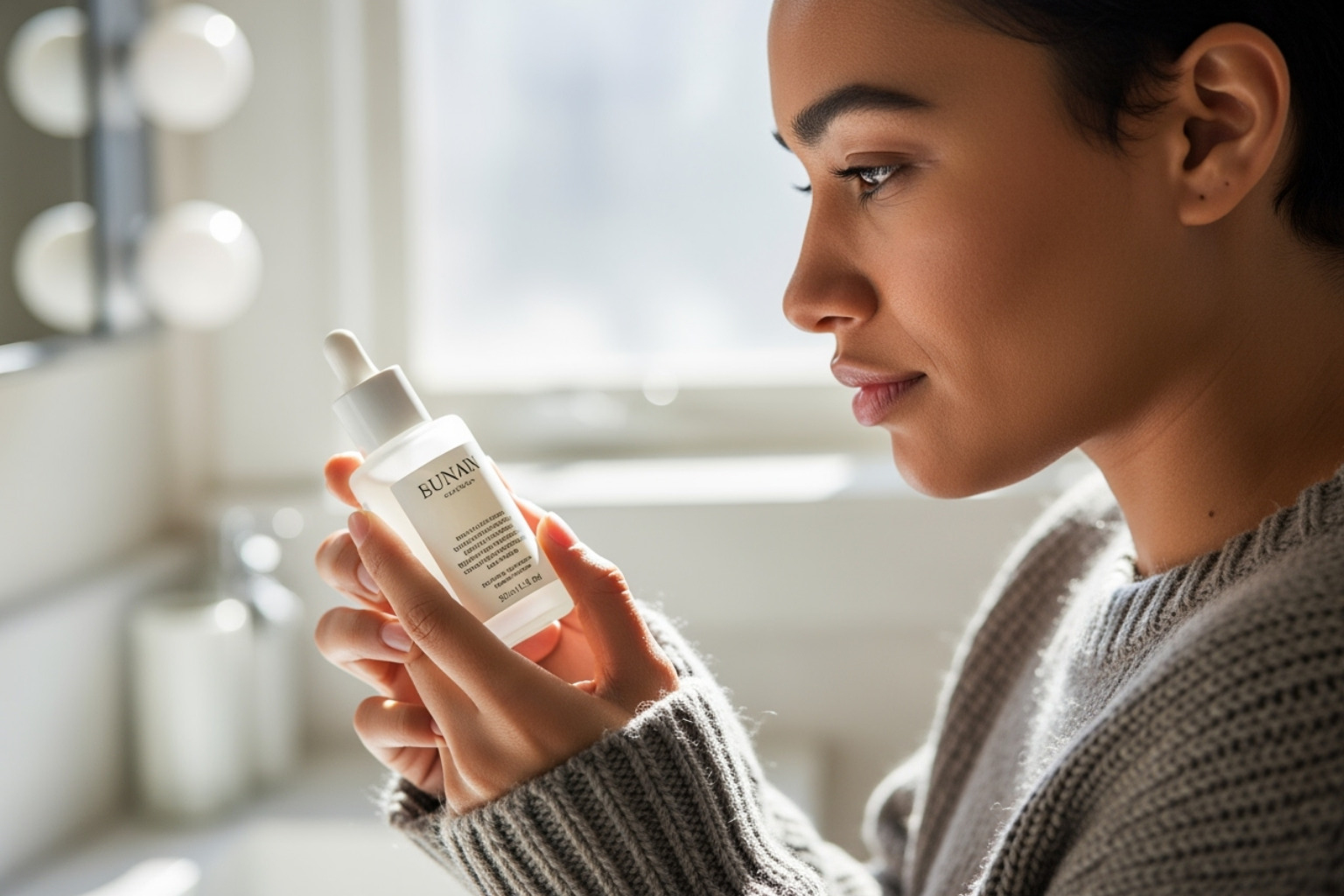
The journey starts with understanding what we’re buying. It continues with supporting brands that align with our values. And it flourishes when we share our knowledge with friends and family, creating a community of conscious consumers who care about both looking good and doing good.
Decoding Labels: How to Spot Truly plastic free beauty products
Reading beauty labels can feel like learning a foreign language, especially when brands use fancy marketing terms that sound eco-friendly but don’t mean much. The trick is knowing what to look for – and what to be suspicious of.
Greenwashing is everywhere in the beauty world. Terms like “natural,” “eco-friendly,” or “green” aren’t regulated, so brands can slap them on almost anything. That’s why we need to dig deeper and look at the actual materials and ingredients.
When examining packaging, focus on specific materials. Glass jars and bottles are your best friends – they’re infinitely recyclable and don’t leach chemicals into products. Aluminum tubes and containers are lightweight, durable, and highly recyclable. Bamboo components grow quickly and biodegrade naturally. Compostable paper or cardboard packaging breaks down completely in the right conditions.
Be cautious with bioplastics. While they sound eco-friendly, many still require industrial composting facilities that aren’t available everywhere. Some bioplastics can even contaminate regular recycling streams, causing more harm than good.
Here’s where it gets tricky: even products in glass containers might have hidden plastics in pumps and droppers. Don’t let this discourage you – just be aware and look for brands that are transparent about these components or actively working on alternatives.
For checking ingredients, the Beat The Microbead App is a game-changer. Simply scan a product’s barcode, and it tells you if microplastics are lurking inside. These tiny plastic particles are often used as exfoliants or texture improvers, but they’re terrible for marine life and potentially harmful to our health too.
Look for These Certifications and Standards
Certifications are like having a trusted friend vouch for a brand’s claims. They provide third-party verification that goes beyond marketing speak to ensure products actually meet strict standards.
MADE SAFE is one of the most comprehensive certifications you can find. When you see this seal, you know the product is free from known toxic chemicals that could harm humans, animals, or ecosystems. It’s rigorous testing that covers everything from ingredients to packaging.
Leaping Bunny certification guarantees no animal testing occurred at any stage of product development. While not directly about plastic, it signals a brand’s commitment to ethical practices across the board.
B Corp certification is fascinating because it looks at the entire company, not just individual products. These brands must meet high standards for social and environmental performance, transparency, and accountability. They’re legally required to consider the impact of their decisions on workers, customers, suppliers, community, and the environment.
Some innovative brands are going even further with Plastic Negative commitments. This means they actively remove more plastic from the environment than their business creates. It’s a powerful way to address the existing plastic crisis while building a sustainable business.
Zero Waste certifications indicate brands committed to minimizing waste throughout their entire lifecycle – from how they source ingredients to how products are manufactured, packaged, and eventually disposed of.
Understanding the difference between cruelty-free (no animal testing) and vegan (no animal-derived ingredients) helps you make choices that align with your values. Many plastic free beauty products brands accept both principles, creating products that are kind to animals and the planet.
Building Your First Kit of plastic free beauty products
Starting your plastic-free beauty journey doesn’t require throwing out everything you own and starting fresh. Instead, think of it as gradually building a collection of products that make you feel good inside and out.
The easiest place to start? Your bamboo toothbrush. It’s affordable, works exactly like a regular toothbrush, and when it’s worn out, you can compost the handle. Considering that billions of plastic toothbrushes end up in landfills every year, this simple swap makes a real difference.
Next, try a solid shampoo bar. These concentrated powerhouses last much longer than liquid shampoos and eliminate plastic bottles entirely. They’re perfect for travel too – no worrying about spills or liquid restrictions. Many people are surprised by how luxurious and effective these bars can be.
Lip balm in a tin is another easy win. These little metal containers are endlessly reusable, and the balms inside are often more nourishing than their plastic-tube counterparts. Many work double-duty as cheek tints or cuticle balms too.
Transform your makeup removal routine with reusable makeup remover pads. Made from soft bamboo or organic cotton, these gentle pads can be washed and reused for years. They’re often more effective than disposable cotton pads and feel much softer on your skin.
These beginner-friendly swaps let you experience the quality and convenience of plastic free beauty products without overwhelming your routine or budget. Each small change builds momentum for bigger changes down the road. Plus, you’ll likely find that many of these alternatives work better than what you were using before.
Frequently Asked Questions about Plastic-Free Beauty
When we chat with friends about making the switch to plastic free beauty products, the same questions come up again and again. We totally get it – change can feel uncertain, especially when it comes to something as personal as our beauty routines. Let’s tackle these concerns head-on so you can feel confident about your choices.
Are plastic-free beauty products more expensive?
Here’s the thing – this question always makes us smile because the answer depends on how you look at it. Yes, some plastic free beauty products might have a higher price tag upfront. But stick with us here, because the math gets really interesting.
Think about that gorgeous shampoo bar sitting in your shower. It might cost $15 compared to a $5 bottle of liquid shampoo. But here’s where it gets exciting – that single bar will outlast two or three plastic bottles! Suddenly, you’re not just saving money, you’re also making fewer trips to the store.
The same goes for refillable systems. You might invest $30 in a beautiful metal lipstick case initially, but those refills? They typically cost half the price of buying a whole new product. Over time, this adds up to real savings in your beauty budget.
And let’s be honest – when we factor in the true cost of plastic pollution on our planet and the potential health impacts of certain chemicals in conventional products, investing in plastic free beauty products becomes an investment in our future. Sometimes the most valuable things aren’t measured just in dollars.
Do plastic-free products work as well as conventional ones?
Oh, this is where we get really excited! The performance of plastic free beauty products has absolutely blown us away. In many cases, they work better than their conventional counterparts.
Here’s why: when brands focus on creating truly sustainable products, they often put extra care into their formulations. Those concentrated solid bars? They’re packed with active ingredients without all the water and fillers. Waterless technology means you’re getting more bang for your buck in every application.
We love reading customer reviews because they tell the real story. People rave about how their hair became stronger and shinier after switching to shampoo bars. Others talk about how their skin improved when they started using products with cleaner ingredient lists. One person described their plastic-free beauty oil as leaving their skin “always so smooth” and their hair “so silky and shiny.”
The secret is that these brands are innovating like crazy. They’re not just removing plastic – they’re reimagining what beauty products can be. High-performance natural ingredients, cutting-edge formulations, and a focus on results mean you’re not compromising on quality. You’re often upgrading it.
What’s the difference between “plastic-free,” “zero-waste,” and “recyclable” packaging?
We hear this question a lot, and honestly, it’s such an important one because these terms get thrown around everywhere. Let’s break it down in a way that actually makes sense.
Plastic-free is the most straightforward – it simply means no plastic components anywhere in the packaging. Period. If you see this label, you know that jar, tube, or wrapper contains zero plastic materials.
Zero-waste is like the overachiever of sustainability terms. It’s not just about the packaging – it’s about the entire lifecycle of the product. These brands think about everything from how ingredients are sourced to what happens when you’re done with the container. The goal is that nothing ends up in a landfill. Pretty ambitious, right?
Recyclable is where things get a bit tricky. Just because something can be recycled doesn’t mean it will be. The harsh reality is that less than 10% of plastic is actually recycled globally. Your local recycling facility might not accept certain materials, or they might be too contaminated to process.
This is why we’re such big fans of plastic free beauty products that lean toward zero-waste principles. Glass jars can be recycled infinitely, aluminum tubes are highly recyclable, and many can even be repurposed around your home. It’s about choosing materials that have the best chance of actually completing that recycling loop.
Conclusion
Your beauty routine has the power to change the world, one plastic free beauty products swap at a time. It’s honestly that simple – and that profound.
We’ve walked through some pretty sobering realities together. Those 120 billion units of packaging waste each year aren’t just numbers on a page. They represent a beauty industry that’s been stuck in old habits, creating products that harm both our bodies and our planet. The microplastics in our bloodstream, the PFAS chemicals absorbed through our skin, the plastic patches floating in our oceans – these aren’t distant problems anymore.
But here’s what fills us with hope: the solutions are already here. The solid shampoo bars that outlast three plastic bottles. The refillable lipstick cases that feel luxurious while reducing waste. The glass jars and metal tins that protect our skincare while protecting the earth. These aren’t compromises – they’re upgrades.
A sustainable glow is absolutely achievable. You don’t need to sacrifice performance, beauty, or the joy of your daily routine. In fact, many people find that switching to plastic free beauty products actually improves their results. Cleaner ingredients, more concentrated formulas, and innovative waterless technologies often work better than their plastic-packaged alternatives.
The environmental benefits speak for themselves – less landfill waste, cleaner oceans, reduced carbon emissions from production and transport. The health benefits are equally compelling – fewer hormone-disrupting chemicals, no microplastics, and formulations focused on nourishing rather than just covering up.
Your choices matter more than you might think. Every time you choose a bamboo toothbrush over a plastic one, or a shampoo bar over a bottle, you’re casting a vote for the kind of world you want to live in. The beauty industry is watching, and they’re responding to what conscious consumers like you are demanding.
The future of beauty isn’t just conscious and clean – it’s already happening. Brands are innovating faster than ever, creating products that prove we can have it all: effectiveness, luxury, and sustainability wrapped up in one beautiful package.
At Beyond Beauty Lab, we’re here to support you every step of the way. Whether you’re just starting with your first solid bar or building an entirely plastic-free routine, we believe in providing you with the knowledge and insights to make choices that feel good inside and out.
Explore more clean beauty insights to continue your journey toward a more sustainable and beautiful lifestyle.

